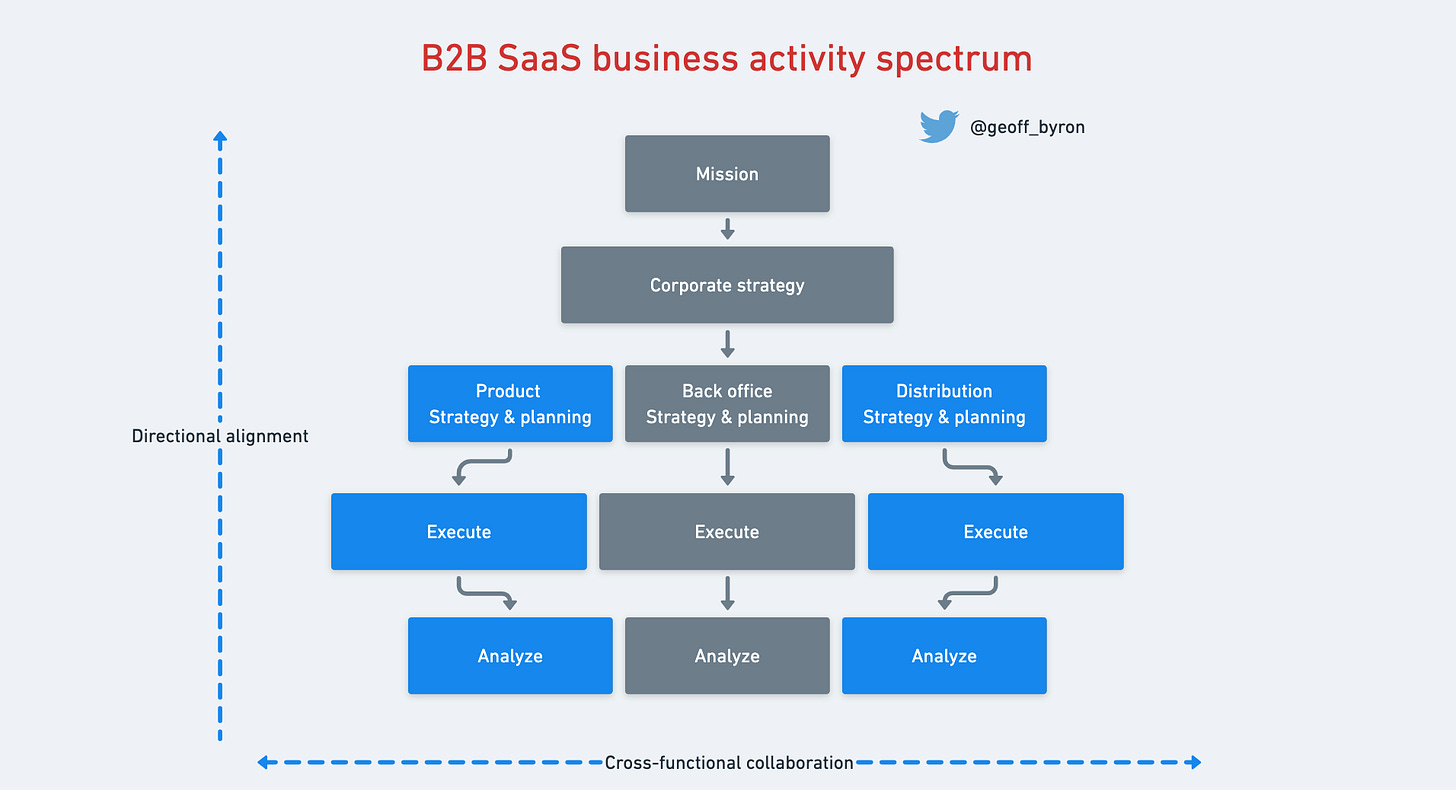B2B SaaS value props
A framework for understanding SaaS products
Businesses use software to perform activities
A business exists to create value for its shareholders. This value can be anything - profits, social benefit, etc. Businesses memorialize the benefit they aim to create in their mission statements.
So if a business exists to create value, then by extension the activities and technology tools it uses are all in pursuit of this same end.
One of the tools that businesses use to create value is SaaS — software delivered over the internet.
SaaS helps businesses to create value by enabling them to do two things:
Do existing activities more productively by enabling more outputs (or the same) with the same (or fewer) inputs
Do new activities that would be impossible or cost prohibitive if done by humans
Organizing business activities
Okay - so SaaS enables better activities. Which activities? Every business activity has a what and a why.
What. What activity are you doing? What activities tend to fall into a subcategory of analyze, plan, or execute.
Why. Why are you doing it? The why is how the activity supports the mission of the business — directional alignment. Alignment happens at the individual, team, and collaboratively across functions.
Bringing it all together
In summary, businesses use software because it:
Enables more productive or novel activities,
Which support analyze, plan, and/or execute actions,
That directionally support your business’ mission,
Either individually or through cross-functional collaboration
So what?
With a framework in place to understand why businesses use software, you can start drawing implications about the B2B SaaS ecosystem. Including how products address the business activity spectrum. Here are some examples that have been running through my head, which this framework helped me clarify:
What business activities does a given business address?
For example, Slack. Slack started out as a communication platform and has evolved into an end-user facing interface connected to other applications. It’s tagline “Where work happens” tells you everything.
They aim to be a communication interface that sits on top of other applications that collectively span the entire business activity spectrum. Enabling directional alignment and cross-functional collaboration across plan, execute, and analyze activities.
That is a very aspirational place to sit.
Why do businesses adopt certain business models?
As I wrote about last week, product-led-growth (PLG) is the distribution model that supports less risky products. Or products that carry out less risky business activities.
Businesses with PLG distribution models assert power to the employee. The employees, not executives, are best positioned and empowered to pick the tools they want to most effectively perform their business activities.
How might disruption in SaaS occur?
Historically the cost to build software was high. So businesses who could bear the costs specialized and built software for others to use.
These costs are no longer high. And are coming down more every day. The no-code movement is an example of this… enabling citizen developers without engineering backgrounds to build complex applications.
B2B focused no and low-code platforms assert that business users (or developer business partners - new job?) will create higher match quality software, thus unlocking more productivity, than a 3rd party will.

